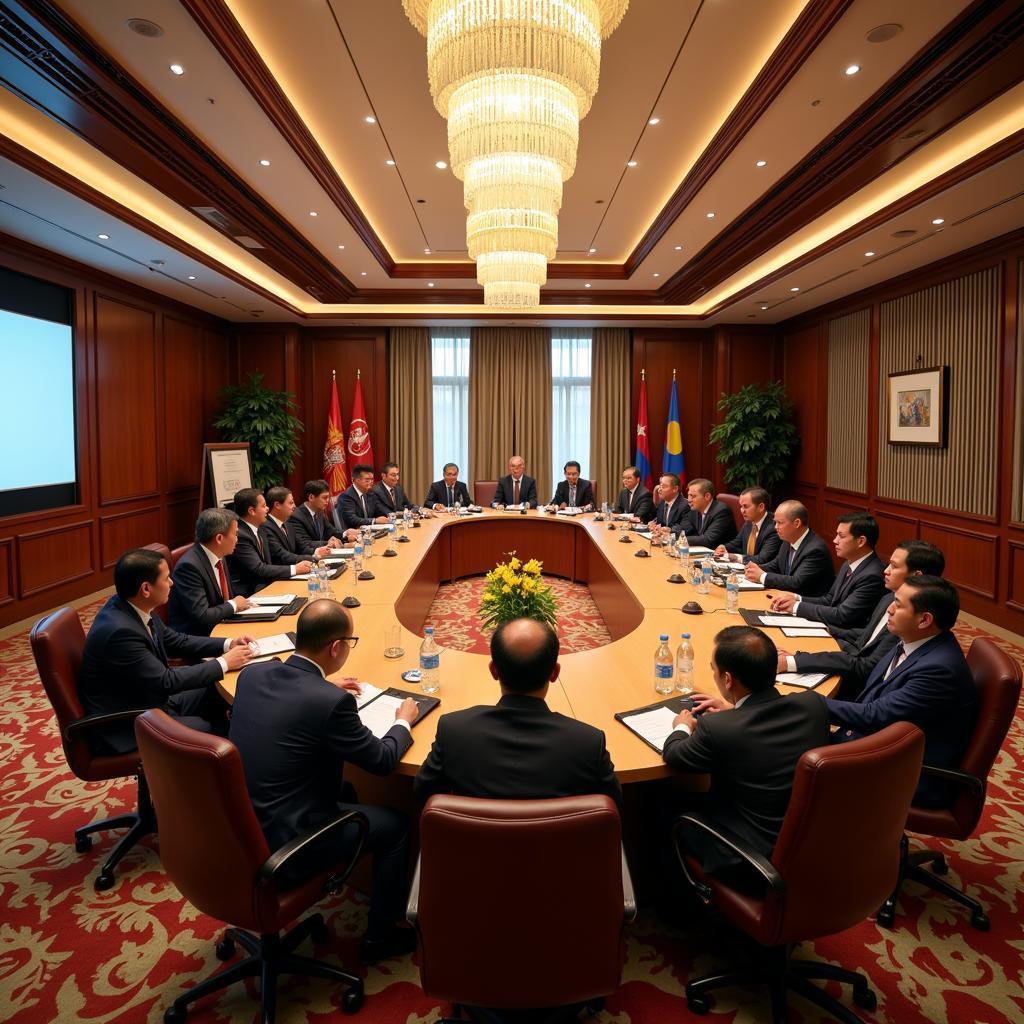The 1951 Refugee Convention, a landmark agreement on the protection of refugees, and ASEAN, a vibrant regional bloc in Southeast Asia, often intersect in discussions concerning human rights. While ASEAN member states haven’t universally ratified the 1951 Convention, its principles resonate deeply with the region’s commitment to human dignity and well-being. This exploration delves into the complexities of this relationship, examining the challenges and opportunities that arise in bridging the gap between ASEAN’s regional human rights framework and the 1951 Convention.
Understanding the 1951 Human Rights Convention and Its Relevance to ASEAN
Adopted in the aftermath of World War II, the 1951 Convention provides a legal framework for protecting refugees and ensuring their fundamental rights. Its core principle of non-refoulement, prohibiting the return of refugees to countries where they face persecution, remains a cornerstone of international refugee law.
For ASEAN, a region familiar with displacement due to conflict and persecution, the Convention’s principles hold significant weight. The region has witnessed waves of refugees and asylum seekers throughout its history, highlighting the need for a robust and humane approach to displacement.
ASEAN’s Approach to Human Rights and Refugee Protection
ASEAN, with its own evolving human rights architecture, has demonstrated a commitment to promoting and protecting the rights of its people. The ASEAN Human Rights Declaration (AHRD), adopted in 2012, affirms fundamental principles like the right to life, liberty, and security of person.
 ASEAN Human Rights Declaration document
ASEAN Human Rights Declaration document
However, the region grapples with a lack of a unified legal framework for refugee protection. The absence of a regional refugee convention poses challenges in ensuring consistent and comprehensive protection standards across Southeast Asia.
Bridging the Gap: Challenges and Opportunities
Several challenges impede the full realization of the 1951 Convention’s principles within the ASEAN context:
- Diverse Legal Frameworks: ASEAN’s diversity in terms of legal systems and ratification status of international treaties presents a challenge in harmonizing regional approaches with the Convention.
- Non-Interference Principle: The ASEAN Charter’s emphasis on non-interference in the internal affairs of member states can, at times, hinder collective action on human rights issues, including refugee protection.
- Capacity Constraints: Limited resources and institutional capacity in some ASEAN member states pose practical challenges in implementing comprehensive refugee protection mechanisms.
Despite these hurdles, opportunities for bridging the gap exist:
- ASEAN’s Growing Regionalism: The trend towards greater regional cooperation within ASEAN provides a platform for developing shared norms and practices on refugee protection.
- Civil Society Engagement: A vibrant civil society sector actively advocates for human rights and refugee protection, contributing to policy dialogue and implementation.
- International Partnerships: Collaboration with international organizations and dialogue with countries experienced in refugee protection can facilitate capacity building and knowledge sharing.
 ASEAN leaders and delegates convening for a regional refugee summit
ASEAN leaders and delegates convening for a regional refugee summit
Conclusion: Towards a More Inclusive and Protective ASEAN
Bridging the gap between the 1951 Human Rights Convention and ASEAN’s regional framework necessitates a multi-faceted approach. Strengthening regional cooperation, enhancing domestic legal frameworks, and fostering partnerships are crucial steps towards a more inclusive and protective environment for refugees in Southeast Asia.
By embracing a human-centered approach grounded in international law and regional values, ASEAN can solidify its commitment to human rights and emerge as a beacon of hope for those seeking refuge within its borders.

